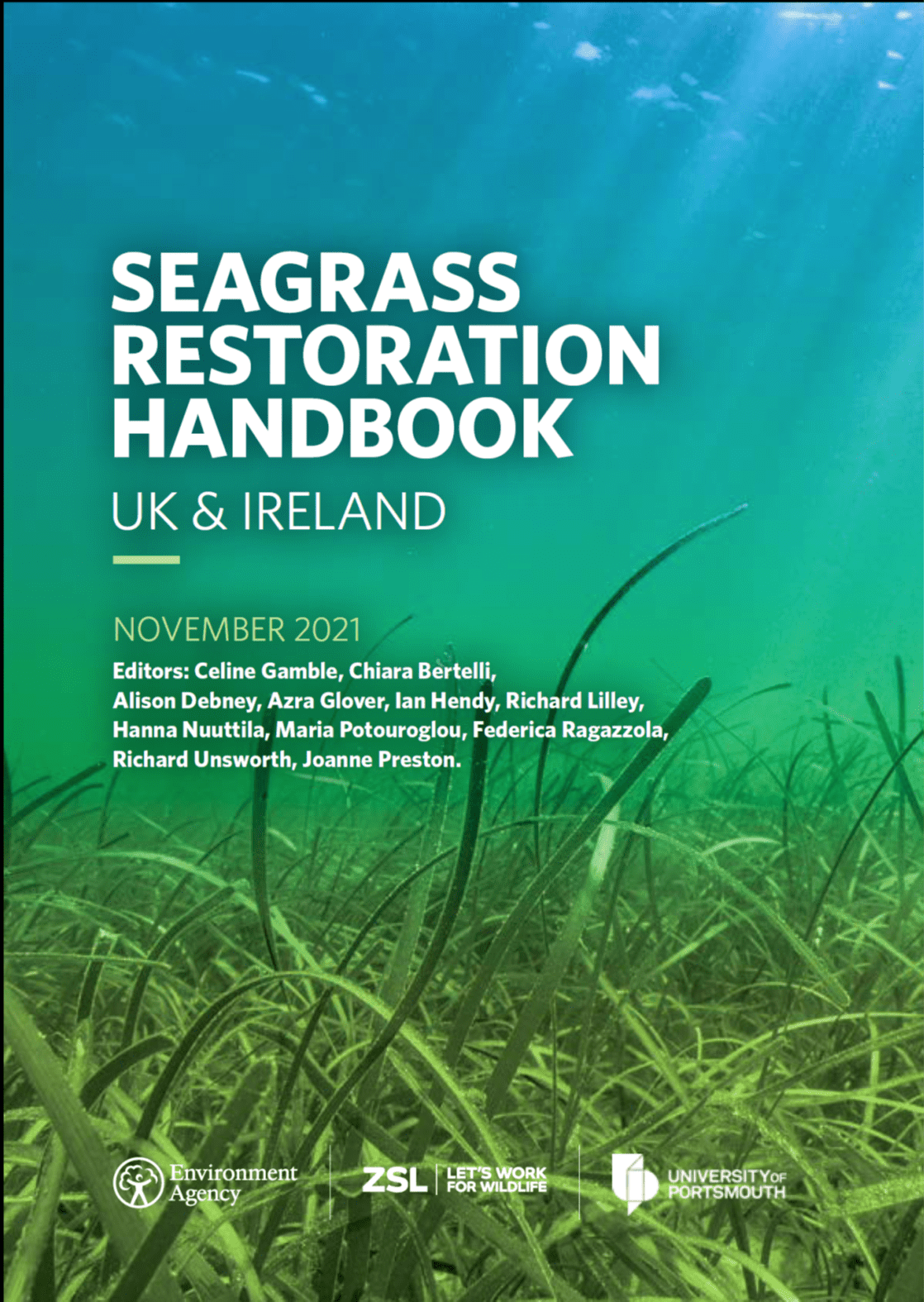Scottish Seagrass Restoration: A Bid For Coastal Regeneration

Table of Contents
The Importance of Scottish Seagrass Meadows
Seagrass meadows provide a multitude of invaluable ecosystem services, underpinning the health and resilience of Scotland's coastal environment. Their benefits extend far beyond their aesthetic appeal.
-
High Biodiversity: Scottish seagrass meadows are biodiversity hotspots. They act as vital nurseries for commercially important fish species like cod and plaice, providing shelter and food for juveniles. They also support a rich array of invertebrates, including crustaceans, molluscs, and worms, forming a complex and interconnected food web. This high biodiversity contributes to the overall health and resilience of the marine ecosystem.
-
Carbon Sequestration: Seagrasses are incredibly efficient at capturing and storing atmospheric carbon dioxide (CO2), earning them the title of "blue carbon" ecosystems. They absorb CO2 at a rate significantly higher than terrestrial forests, playing a crucial role in mitigating climate change. The carbon is stored in both the seagrass plants themselves and the sediments below, locking it away for centuries.
-
Coastal Protection: Extensive seagrass beds act as natural buffers, reducing the impact of wave energy on coastlines. Their dense root systems stabilize sediments, preventing erosion and protecting coastal communities from storm damage. This natural coastal defense is far more sustainable and cost-effective than artificial structures.
-
Water Quality Improvement: Seagrass meadows act as natural filters, improving water clarity by trapping sediments and absorbing excess nutrients. This helps to reduce pollution and improves the overall health of the marine environment. They also help to filter out pollutants such as heavy metals and pesticides, benefiting both marine life and human health.
Threats to Scottish Seagrass and the Urgent Need for Restoration
Despite their importance, Scottish seagrass meadows are facing unprecedented threats, leading to widespread decline and habitat loss. These threats necessitate urgent and effective restoration efforts.
-
Pollution: Agricultural runoff containing fertilizers and pesticides, sewage discharge, and industrial pollutants severely impact seagrass health. Excess nutrients cause algal blooms, which block sunlight and suffocate seagrass. Chemical pollutants can also directly poison seagrass and the organisms that depend on it.
-
Climate Change: Rising sea temperatures and ocean acidification caused by climate change are significant stressors for seagrass. Increased temperatures can lead to bleaching and reduced growth rates, while ocean acidification makes it more difficult for seagrass to build and maintain its skeletal structures.
-
Habitat Loss: Coastal development, dredging, and destructive fishing practices directly destroy seagrass habitats. The loss of these vital areas reduces the overall capacity of the ecosystem to support marine life and provide its vital services.
-
Disease: Seagrass diseases, often exacerbated by environmental stress, can cause widespread mortality in seagrass beds. These diseases can devastate entire meadows in a relatively short period.
Current Scottish Seagrass Restoration Projects and Initiatives
Several projects and initiatives are underway to restore Scotland's declining seagrass meadows. These efforts employ various techniques and benefit from strong community involvement and government support.
-
Replanting and Seeding: Restoration projects involve carefully collecting seagrass seeds or transplanting seagrass shoots from healthy areas to degraded sites. This process requires careful site selection, consideration of water quality, and ongoing monitoring to ensure success. Challenges include the difficulty of establishing new meadows and the susceptibility of young plants to environmental stress.
-
Community Involvement: Numerous volunteer groups and local communities actively participate in seagrass restoration. Their involvement is crucial for successful restoration, providing vital manpower for planting and monitoring, as well as raising awareness about the importance of seagrass.
-
Government Funding and Support: The Scottish Government, along with other organizations like Marine Scotland and various conservation charities, provides funding and support for seagrass research, restoration, and monitoring initiatives. This financial support is essential for the long-term success of restoration efforts.
-
Monitoring and Evaluation: Regular monitoring and evaluation of restoration projects are crucial to assess their effectiveness and identify areas for improvement. This involves tracking seagrass growth, biodiversity, and the overall health of the restored meadows.
Case Studies of Successful Scottish Seagrass Restoration
Several successful projects demonstrate the feasibility of seagrass restoration in Scotland. For example, the Lochranza project on Arran has shown significant success in re-establishing seagrass beds using a combination of planting and community engagement. Similar positive results have been observed in the Firth of Clyde, highlighting the potential for wider-scale restoration across Scotland's coast. Detailed reports on these projects are readily available from organizations involved in the restoration efforts.
The Future of Scottish Seagrass Restoration: Challenges and Opportunities
The future of Scottish seagrass restoration hinges on addressing existing challenges while embracing new opportunities.
-
Technological Advancements: New technologies like drone surveys and advanced monitoring techniques can improve the efficiency and effectiveness of restoration efforts. These tools allow for better assessment of seagrass health and more targeted intervention strategies.
-
Policy and Regulation: Strong policies and regulations are crucial to protect existing seagrass meadows and prevent further degradation. This includes stricter controls on pollution, sustainable fishing practices, and careful planning of coastal development.
-
Collaboration and Partnerships: Successful seagrass restoration requires strong collaboration between researchers, policymakers, NGOs, and local communities. A unified approach is essential to coordinate efforts and maximize the impact of restoration projects.
-
Long-term Monitoring and Management: Continuous monitoring and adaptive management strategies are essential for the long-term success of restored seagrass meadows. This ensures that restoration efforts are effective and resilient to environmental changes.
Conclusion
Scottish seagrass plays a vital role in coastal regeneration, offering significant benefits for biodiversity, carbon sequestration, and coastal protection. However, these vital ecosystems are under severe threat from pollution, climate change, and habitat loss. Current restoration projects demonstrate that effective recovery is possible through a combination of replanting, community engagement, and government support. Looking forward, continued investment in research, innovative technologies, strengthened policies, and collaborative partnerships are crucial for the long-term success of Scottish seagrass restoration. Learn more about the ongoing efforts, support organizations dedicated to seagrass conservation, and advocate for policies that protect these invaluable underwater meadows. Support the continued effort in Scottish seagrass restoration and help protect our vital coastlines.

Featured Posts
-
 Is This Thing On Production Bradley Cooper Directs Will Arnett In New York City
May 05, 2025
Is This Thing On Production Bradley Cooper Directs Will Arnett In New York City
May 05, 2025 -
 Uk Economy Carneys Bold Plan For Transformation
May 05, 2025
Uk Economy Carneys Bold Plan For Transformation
May 05, 2025 -
 Epistrofi Toy Body Heat I Pithani Symmetoxi Tis Emma Stooyn
May 05, 2025
Epistrofi Toy Body Heat I Pithani Symmetoxi Tis Emma Stooyn
May 05, 2025 -
 Nhl Playoffs Analyzing The Tight Western Conference Wild Card Race
May 05, 2025
Nhl Playoffs Analyzing The Tight Western Conference Wild Card Race
May 05, 2025 -
 Bianca Censori And Kanye West Working On Their Marriage After Extensive Talks
May 05, 2025
Bianca Censori And Kanye West Working On Their Marriage After Extensive Talks
May 05, 2025
Latest Posts
-
 Georgetowns 2025 Kentucky Derby Festival Queen Her Story
May 05, 2025
Georgetowns 2025 Kentucky Derby Festival Queen Her Story
May 05, 2025 -
 2025 Kentucky Derby Festival Queen A Georgetown Residents Triumph
May 05, 2025
2025 Kentucky Derby Festival Queen A Georgetown Residents Triumph
May 05, 2025 -
 Kentucky Derby Festival Georgetown Woman Takes The Crown In 2025
May 05, 2025
Kentucky Derby Festival Georgetown Woman Takes The Crown In 2025
May 05, 2025 -
 Georgetown Resident Wins 2025 Kentucky Derby Festival Queen Title
May 05, 2025
Georgetown Resident Wins 2025 Kentucky Derby Festival Queen Title
May 05, 2025 -
 Predicting The 2025 Tampa Bay Derby Odds Potential Field And Kentucky Derby Outlook
May 05, 2025
Predicting The 2025 Tampa Bay Derby Odds Potential Field And Kentucky Derby Outlook
May 05, 2025
